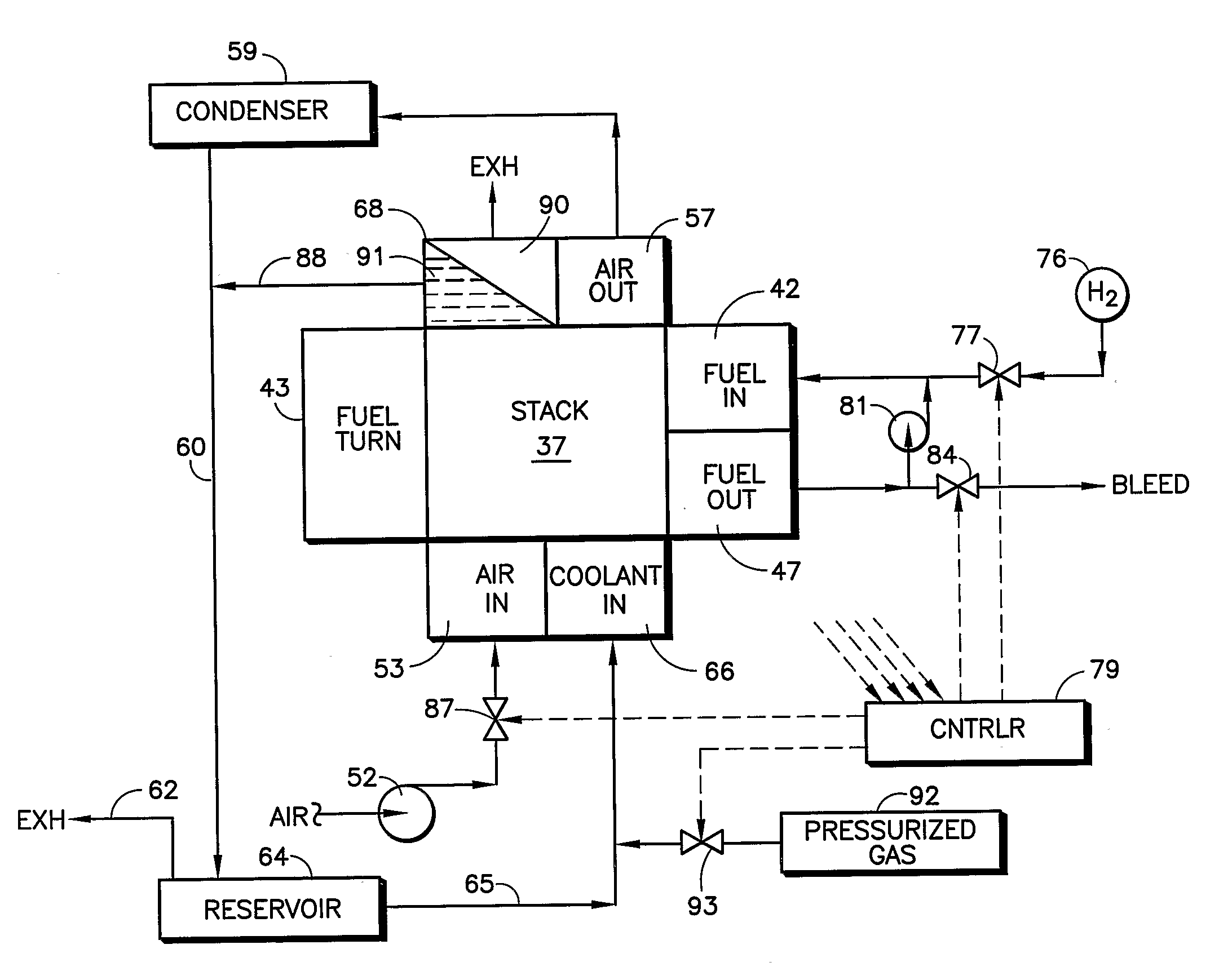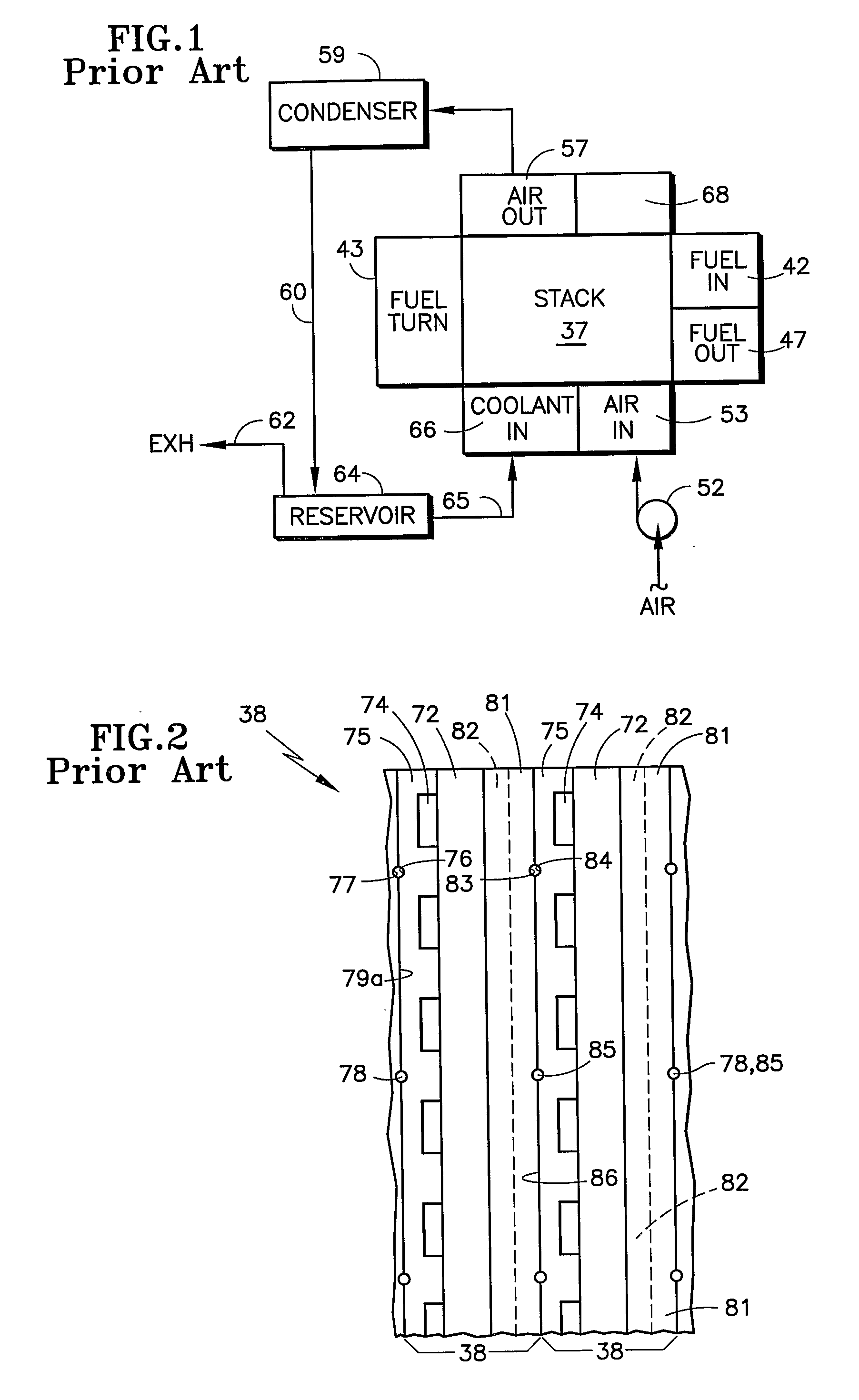Circulation of Gas-Entrained Fuel Cell Coolant
a fuel cell and gas-entrained technology, applied in the field of gas-entrained fuel cell coolant circulation, can solve the problems of reduced performance, reduced cooling or water flow rate in the cells, and degradation of components, so as to improve the hydration of pem fuel cells, reduce gas ingestion, and improve the effect of gas venting
- Summary
- Abstract
- Description
- Claims
- Application Information
AI Technical Summary
Benefits of technology
Problems solved by technology
Method used
Image
Examples
Embodiment Construction
[0027]A fuel cell system employing evaporative cooling is disclosed in U.S. Ser. No. 11 / 230,066 filed Sep. 19, 2005, and described with respect to FIGS. 1 and 2 herein. In the aforementioned application, a fuel cell stack 37 receives fuel from an inlet 42; the fuel passes to the left in a first half of the fuel flow field and then is returned by a fuel turn manifold 43 to pass to the right through the other half of the stack and through a fuel outlet 47. Air is pumped through an air inlet 53 by an air pump 52 into the oxidant reactant gas (air) flow fields in the stack 37; water evaporates into the air, thereby cooling the fuel cells 38 (FIG. 2). The outflow 57 of the oxidant reactant gas channels passes through a condenser 59 wherein heat is removed and the water is recovered and returned over a conduit 60 to a water / gas separator which also serves as a reservoir 64. Any gas in the water is removed through exhaust 62. The water returns over a conduit 65, through coolant inlets 66 i...
PUM
| Property | Measurement | Unit |
|---|---|---|
| velocity | aaaaa | aaaaa |
| pressure | aaaaa | aaaaa |
| hydrophilic | aaaaa | aaaaa |
Abstract
Description
Claims
Application Information
 Login to View More
Login to View More - R&D
- Intellectual Property
- Life Sciences
- Materials
- Tech Scout
- Unparalleled Data Quality
- Higher Quality Content
- 60% Fewer Hallucinations
Browse by: Latest US Patents, China's latest patents, Technical Efficacy Thesaurus, Application Domain, Technology Topic, Popular Technical Reports.
© 2025 PatSnap. All rights reserved.Legal|Privacy policy|Modern Slavery Act Transparency Statement|Sitemap|About US| Contact US: help@patsnap.com



